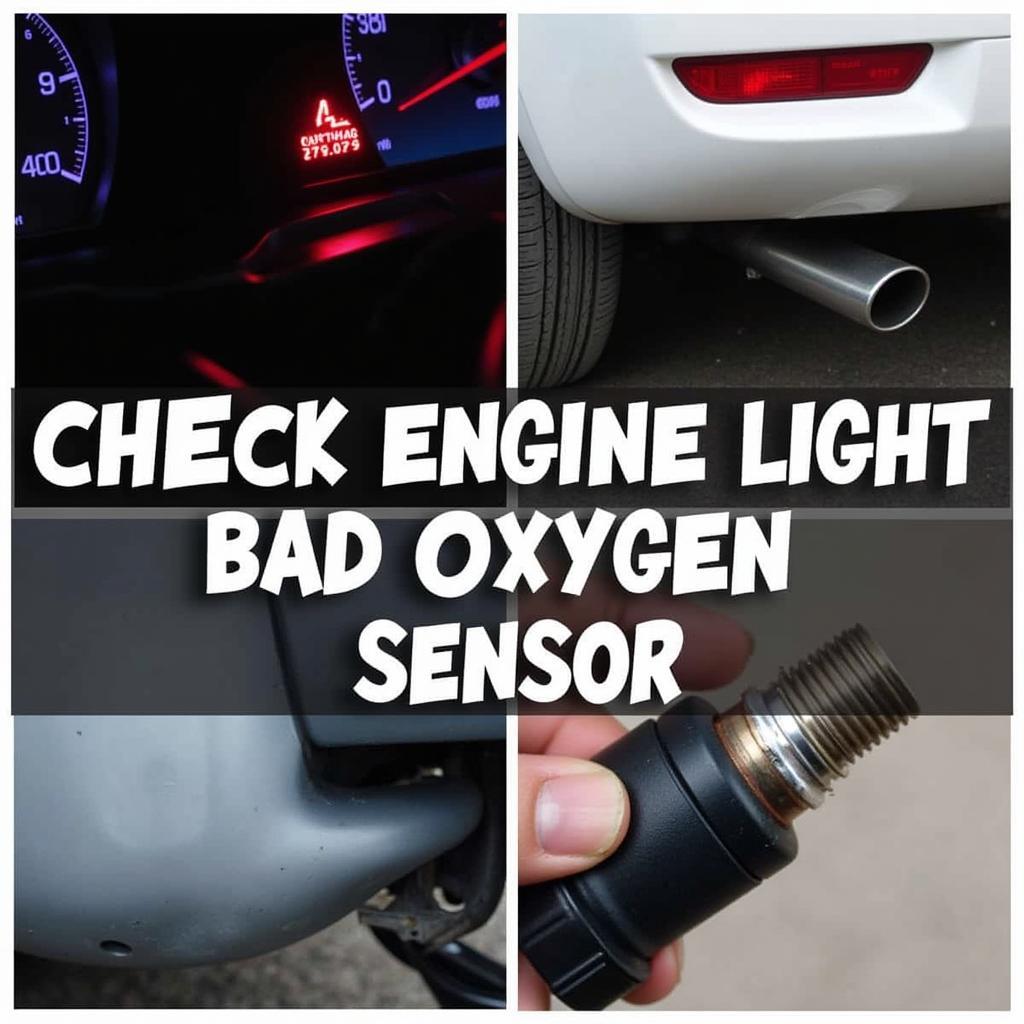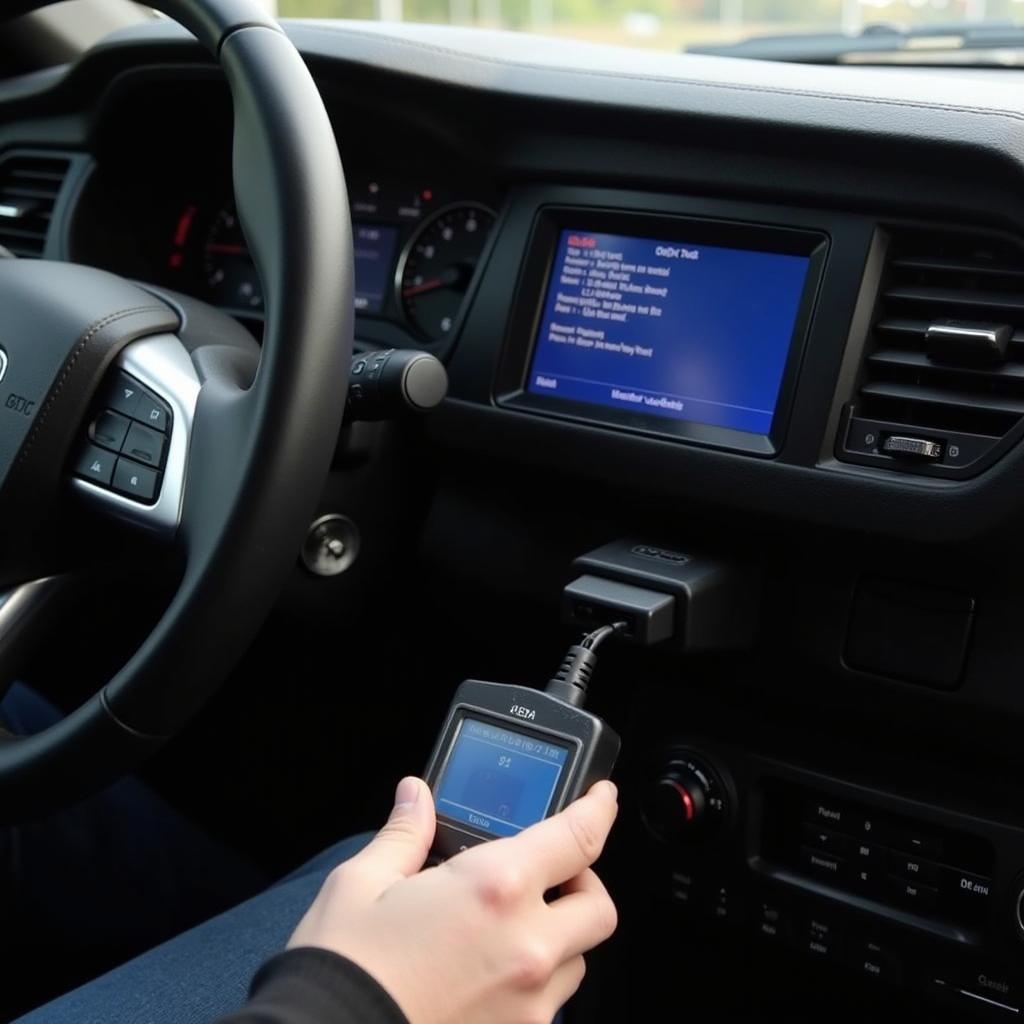Oxygen sensors play a crucial role in your car’s engine performance and emissions. A faulty sensor can lead to decreased fuel efficiency, increased emissions, and even damage to your catalytic converter. So, if you suspect a problem, knowing how to diagnose and fix it can save you time and money. This article will guide you through the process of fixing your oxygen sensor.
 Oxygen sensor location in a car exhaust system
Oxygen sensor location in a car exhaust system
Understanding the Oxygen Sensor’s Role
Your car’s oxygen sensor, also known as an O2 sensor, measures the amount of unburned oxygen in the exhaust gases. This information is sent to the engine control unit (ECU), which adjusts the air-fuel mixture to ensure optimal combustion. A malfunctioning sensor can disrupt this process, leading to a variety of problems.
Signs of a Failing Oxygen Sensor
Several symptoms might indicate a failing oxygen sensor. These include a check engine light, poor fuel economy, rough idling, and a sulfurous smell from the exhaust. If you notice any of these signs, it’s crucial to investigate further.
 Symptoms of a bad oxygen sensor
Symptoms of a bad oxygen sensor
Diagnosing the Problem: How Do You Pinpoint the Issue?
Before replacing the oxygen sensor, it’s essential to confirm it’s the culprit. You can use an OBD-II scanner to read the error codes stored in the ECU. Codes related to the oxygen sensor, such as P0130 (Oxygen Sensor Circuit Malfunction Bank 1 Sensor 1), can pinpoint the problem.
Testing the Oxygen Sensor with a Multimeter
A multimeter can be used to test the sensor’s voltage output. A properly functioning sensor should fluctuate between 0.1 and 0.9 volts. A constant reading or no fluctuation suggests a faulty sensor.
How Do You Replace Your Oxygen Sensor? A Step-by-Step Guide
Once you’ve diagnosed a faulty oxygen sensor, replacing it is a relatively straightforward process. Remember to allow the exhaust system to cool down completely before starting.
- Locate the faulty sensor: Oxygen sensors are typically located in the exhaust pipe, before and after the catalytic converter.
- Disconnect the electrical connector: Carefully unplug the sensor’s wiring harness.
- Remove the old sensor: Use an oxygen sensor socket to loosen and remove the old sensor.
- Install the new sensor: Apply anti-seize compound to the threads of the new sensor and screw it in by hand. Then, tighten it with the oxygen sensor socket.
- Reconnect the electrical connector: Plug the wiring harness back into the new sensor.
- Clear the error codes: Use your OBD-II scanner to clear the error codes from the ECU.
“Always use the correct oxygen sensor for your specific car model to ensure compatibility and optimal performance,” advises John Miller, a veteran automotive technician with over 20 years of experience.
How to Fix Car from Running Rich
Sometimes, a faulty oxygen sensor can cause your car to run rich, meaning the air-fuel mixture has too much fuel. how to fix car from running rich provides further information and solutions for this specific issue.
Preventing Future Oxygen Sensor Problems
Regular maintenance, such as using quality fuel and avoiding harsh driving conditions, can help prolong the life of your oxygen sensor.
“Regularly checking your car’s exhaust system can help identify potential issues before they become major problems,” says Sarah Chen, a certified mechanic and automotive instructor.
Conclusion
Knowing how do you fix your oxygen sensor in your car is a valuable skill for any car owner. By following these steps, you can save money on repairs and keep your car running smoothly. For any questions or assistance, contact AutoTipPro at +1 (641) 206-8880 or visit our office at 500 N St Mary’s St, San Antonio, TX 78205, United States.
FAQ
- How often should I replace my oxygen sensor? Most oxygen sensors have a lifespan of 60,000 to 90,000 miles.
- Can I drive with a bad oxygen sensor? While you can drive with a bad oxygen sensor, it’s not recommended as it can damage other components.
- What are the different types of oxygen sensors? There are two main types: upstream and downstream. Upstream sensors monitor the air-fuel mixture before the catalytic converter, while downstream sensors monitor the converter’s efficiency.
- How much does it cost to replace an oxygen sensor? The cost varies depending on the car model and the sensor’s location, but it typically ranges from $50 to $300.
- Can I replace the oxygen sensor myself? Yes, replacing an oxygen sensor is a relatively easy DIY task.
- What tools do I need to replace an oxygen sensor? You’ll need an oxygen sensor socket, a wrench set, and possibly some penetrating oil.
- How do I know which oxygen sensor is bad? An OBD-II scanner can pinpoint the faulty sensor.






Leave a Reply